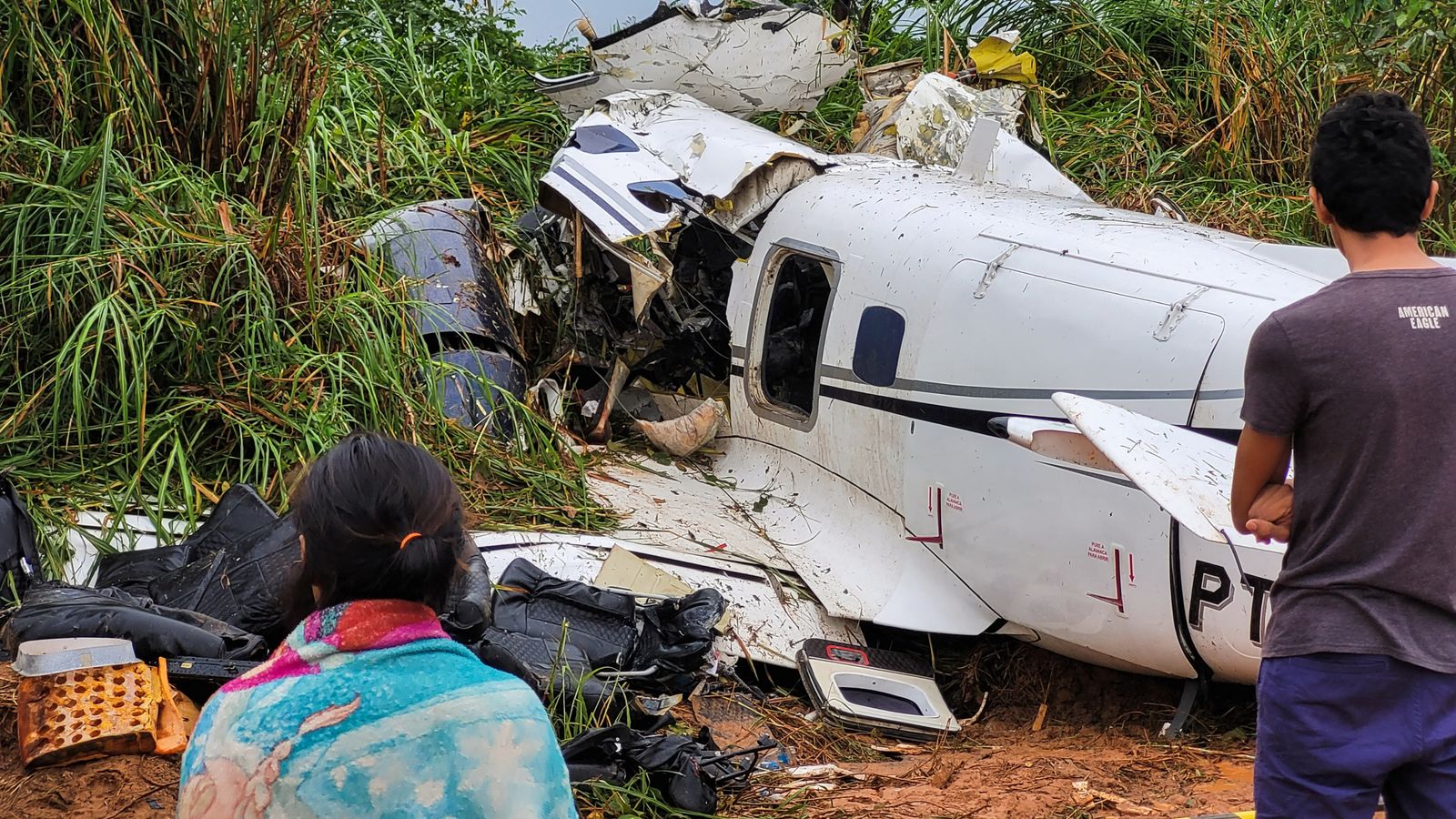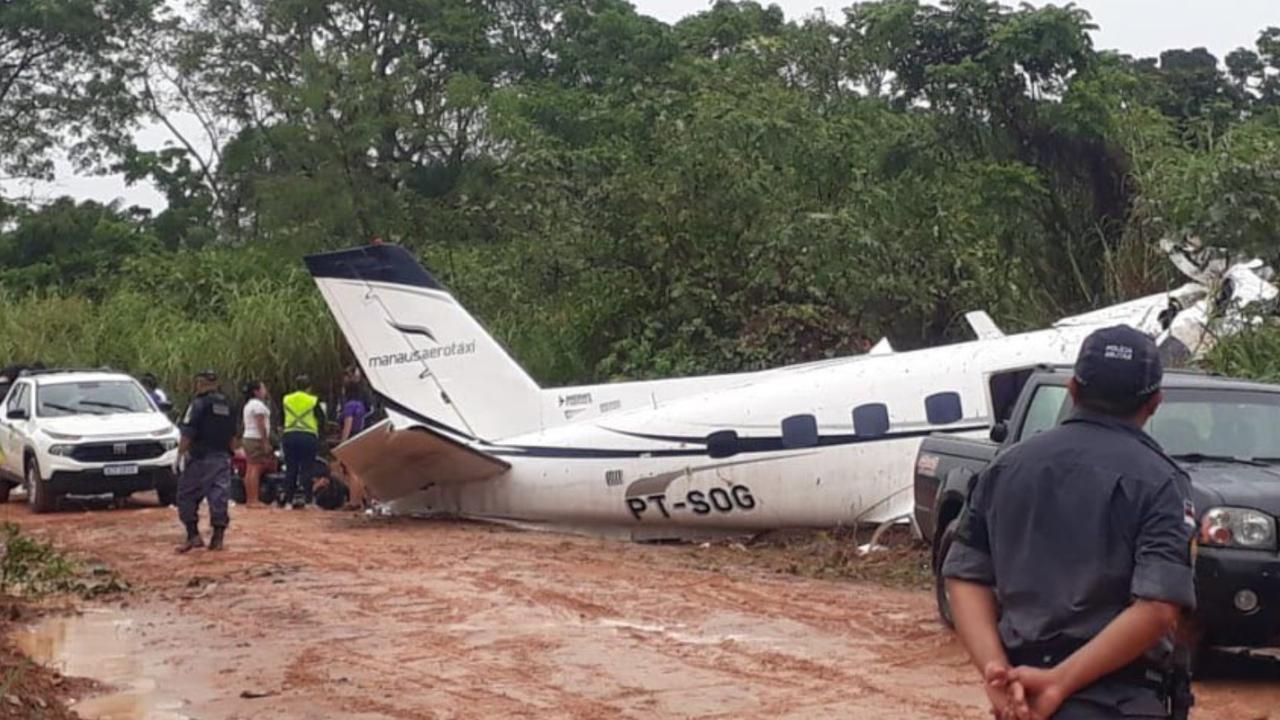Historical Context of Air Accidents in Brazil: Brazil Flight Crash

Brazil has a long and unfortunately, sometimes tragic, history with air accidents. The country’s vast size and challenging geography, coupled with rapid economic growth and a booming aviation industry, have contributed to a number of significant air disasters over the years. Understanding the historical context of these accidents is crucial for evaluating the evolution of aviation safety regulations and practices in Brazil.
Timeline of Significant Air Accidents in Brazil
This section will provide a chronological overview of some of the most notable air accidents in Brazil, highlighting the key details and contributing factors.
- 1946: Rio-Aéreo Flight 142 – This tragic accident occurred on July 24, 1946, when a Douglas DC-3 crashed near Rio de Janeiro, killing all 23 people on board. The accident was attributed to a combination of factors, including pilot error and mechanical failure.
- 1950: Cruzeiro do Sul Flight 104 – This accident, which occurred on January 10, 1950, involved a Lockheed Constellation that crashed into a mountain in the Serra do Mar, killing all 45 people on board. The investigation revealed that the plane was flying too low and that the pilot had failed to maintain proper altitude.
- 1961: Varig Flight 831 – This accident occurred on September 3, 1961, when a Boeing 707 crashed in Rio de Janeiro, killing 97 people. The investigation revealed that the crash was caused by a combination of pilot error and mechanical failure.
- 1973: Varig Flight 820 – This accident occurred on March 3, 1973, when a Boeing 707 crashed in Paris, killing 118 people. The investigation revealed that the crash was caused by a combination of pilot error and mechanical failure.
- 1982: TAM Airlines Flight 352 – This accident occurred on July 19, 1982, when a Boeing 737 crashed in São Paulo, killing 103 people. The investigation revealed that the crash was caused by a combination of pilot error and mechanical failure.
- 1989: VASP Flight 168 – This accident occurred on January 25, 1989, when a Boeing 737 crashed in São Paulo, killing 128 people. The investigation revealed that the crash was caused by a combination of pilot error and mechanical failure.
- 2006: TAM Airlines Flight 3054 – This accident occurred on July 17, 2006, when a Boeing 737-800 overran the runway at Congonhas Airport in São Paulo, resulting in a fire that killed 199 people. The investigation revealed that the crash was caused by a combination of pilot error, mechanical failure, and weather conditions.
- 2014: TAM Airlines Flight 4772 – This accident occurred on July 17, 2014, when a Airbus A320-200 overran the runway at Congonhas Airport in São Paulo, resulting in a fire that killed 2 people. The investigation revealed that the crash was caused by a combination of pilot error, mechanical failure, and weather conditions.
Evolution of Aviation Safety Regulations and Practices in Brazil
This section will explore the historical development of aviation safety regulations and practices in Brazil, highlighting key milestones and improvements over time.
- Early Years: The early years of aviation in Brazil were marked by a lack of regulation and safety standards. As a result, a number of fatal accidents occurred during this period.
- Post-World War II: Following World War II, Brazil began to implement more stringent aviation safety regulations and practices. This included the establishment of the National Civil Aviation Agency (ANAC) in 1967.
- Modernization: In recent years, Brazil has continued to modernize its aviation safety regulations and practices, adopting international standards and best practices. This has included the implementation of new technologies and training programs.
Comparison of Brazilian Airline Safety Record to International Standards
This section will examine the safety record of Brazilian airlines compared to international standards, highlighting any notable differences and trends.
- Overall Safety: Brazilian airlines have generally maintained a good safety record, with a number of airlines ranking among the safest in the world. However, there have been some notable exceptions, such as the TAM Airlines Flight 3054 accident in 2006.
- International Standards: Brazilian airlines are required to comply with international safety standards set by organizations such as the International Civil Aviation Organization (ICAO). This includes regulations on aircraft maintenance, pilot training, and air traffic control.
- Challenges: Despite improvements in safety regulations and practices, Brazil continues to face challenges in maintaining a consistently high safety record. These challenges include a lack of resources, a shortage of qualified personnel, and the need to adapt to rapid growth in the aviation industry.
Causes and Contributing Factors of Brazilian Flight Crashes
Brazil has unfortunately experienced a significant number of air accidents throughout its history. These incidents have often been attributed to a complex interplay of factors, ranging from human error to inadequate infrastructure and challenging environmental conditions.
Pilot Error
Pilot error is a significant contributor to air accidents worldwide, and Brazil is no exception. This can include a wide range of issues, from poor decision-making and inadequate training to fatigue and distractions. For example, in 2006, a Gol Airlines Boeing 737-800 collided with a smaller aircraft over the Amazon rainforest, killing all 154 passengers and crew. The investigation revealed that the Gol pilots failed to properly identify and avoid the other aircraft, highlighting the critical role of pilot vigilance and situational awareness in preventing accidents.
Mechanical Failure, Brazil flight crash
Mechanical failure, encompassing issues with aircraft components, engines, and other systems, can also lead to accidents. Inadequate maintenance practices and the use of aging aircraft can increase the risk of mechanical failures. In 2015, a TAM Airlines Airbus A320 crashed during takeoff at Congonhas Airport in São Paulo, killing 199 people. The investigation concluded that the aircraft’s thrust reversers had malfunctioned, causing the plane to lose control and crash. This accident emphasized the importance of rigorous maintenance schedules and effective oversight to ensure the airworthiness of aircraft.
Weather Conditions
Brazil’s diverse geography and climate can pose significant challenges for aviation. Severe thunderstorms, heavy rain, and strong winds can disrupt flight operations and increase the risk of accidents. In 2014, a Brazilian Air Force C-95 aircraft crashed during a flight from Rio de Janeiro to São Paulo, killing all 16 people on board. The accident was attributed to a combination of factors, including adverse weather conditions and pilot error. This incident underscores the need for pilots to be well-trained and prepared to navigate challenging weather situations.
Infrastructure and Maintenance
The state of infrastructure and maintenance practices can also play a crucial role in aviation safety. Inadequate airport facilities, runway conditions, and air traffic control systems can contribute to accidents. Additionally, the availability of skilled maintenance personnel and the use of high-quality parts are essential for ensuring the safety and reliability of aircraft. In 2017, a small aircraft crashed in the Amazon rainforest, killing all four passengers and crew. The investigation revealed that the aircraft had experienced mechanical issues in the past, and that the maintenance records were incomplete. This incident highlighted the importance of proper maintenance and record-keeping for all aircraft, regardless of size.
Economic and Political Factors
Economic and political factors can also influence aviation safety. In times of economic hardship, airlines may face pressure to cut costs, which can lead to compromises on maintenance, training, and safety procedures. Political instability and corruption can also undermine aviation safety by creating a culture of impunity and hindering effective regulation. For example, in the 1980s, Brazil’s aviation industry was plagued by a series of accidents, some of which were attributed to a lack of government oversight and corruption. This period of instability ultimately led to significant reforms in the aviation sector, aimed at improving safety standards and accountability.
The news of a Brazil flight crash sends shivers down the spine, a stark reminder of the fragility of life and the power of nature. In contrast, the journey of flight 2283 evokes a sense of wonder, a testament to the ingenuity of human flight.
Both stories, though seemingly disparate, weave a tapestry of human ambition and the unpredictable nature of our world.
The skies above Brazil have witnessed a number of tragic air disasters, leaving behind a trail of sorrow and unanswered questions. One such event that shook the nation was the flight 2283 crash , a horrifying incident that left a permanent scar on the collective memory of the country.
The aftermath of such tragedies underscores the need for rigorous safety measures and constant vigilance in the aviation industry, ensuring the skies remain safe havens for travelers.

